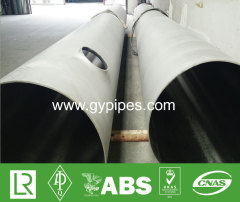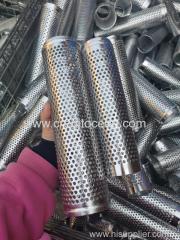





Electropolishing Stainless Tube Steel
| Min. Order: | 500 Kilogram |
|---|---|
| Trade Term: | FOB,CFR,CIF,EXW |
| Payment Terms: | L/C, D/P, T/T |
| Supply Ability: | 2000Ton/Month |
| Place of Origin: | Zhejiang |
Company Profile
| Location: | Lishui, Zhejiang, China (Mainland) |
|---|---|
| Business Type: | Manufacturer, Trading Company |
Product Detail
| Model No.: | 730640 |
|---|---|
| Means of Transport: | Ocean, Land |
| Brand: | Ganyeah |
| Grade: | SUS 304/304L/ 316L/347H/S32205/S32750 |
| Standard: | Astm a312/Astm a778/Astm a554/Astm a249/JIS G3463 |
| Inspection: | UT, ET, HT, RT |
| Section Shape: | Round |
| Certification: | API 5LC,DNV•GL, ABS, TUV, LR. |
| Length: | 6 m or as customers' request |
| Surface: | Pickling,annealing,polishing,bright |
| HS Code: | 730640000/730611000 |
| Origin: | China |
| Production Capacity: | 2000Ton/Month |
| Packing: | Plastic, Wooden Case, Others Seaworthy Packing |
| Delivery Date: | 15days |
Product Description
Stainless Steel Pipes Finishing Methods
A stainless steel surface finish is commonly applied in order to ensure the maintenance of the surface as well as to deliver the desired aesthetic characteristics. All stainless steel surfaces need to be degreased, cleaned and finished after undergoing a fabrication process that alters the condition of the the surface.
Electropolishing
An electrochemical process applied in order to remove the peaks of the rough surfaces of metal, electropolishing is capable of smoothing the surface of the stainless steel, thus giving it a brighter appearance.
Electropolishing Stainless Tube Steel Finishing in the manner results in a finish that is resistant to corrosion, aesthetically pleasing and hygienic. This stainless steel surface finish can also appear 'frosted' on some types of stainless steel.
Grinding
With the capability of being readily polished and ground after standard techniques have been modified, stainless steel surfaces, due to high strength, do tend to have a build up of material on abrasive media. Because of stainless steel's low thermal conductivity, heat is also accumulated, resulting in what is called heat tinting on the surface.
Complications can be alleviated by simply using low feed and grinding speeds combined with a specific set of lubricants (matching the needs and requirements of the stainless steel surface) and grinding medias.
Mechanical Polishing
Note that all polishing processes must be done is such a way as to avoid iron based material contamination. Vibratory finishing and barrel finishing will often be used in order to polish small parts and stainless steel fittings.
When sand blasting is done, a clean silica or garnet sand must be used, and in cases where grit, shot and cur wire blasting is performed. A stainless steel media with an equal or greater resistance to corrosion (compared to the stainless steel surface being finished) must be used.
While light heat tint can be removed by using wire brushing, it is vital that these brushes are stainless steel, clean and never used on any other materials.
Keep in mind that stainless steel finishing of this kind is not resistant to corrosion as this process does not remove all of the chromium depleted materials. Mechanical Polishing will often be done prior to Pickling processes.
Passivation
Used in order to remove any free iron contamination, Passivation is an effective measure for removing non-stainless steel alloys (such as cast iron, mild steel, elemental iron and carbon steel) that can cause complications. This process involves the treatment of the surface with a nitric acid, or nitric acid and sodium dichromate combination.
Normally deposited as a result of fabrication tools or the work surface during the stainless steel fabrication process, iron particles encourages surface corrosion, and discoloration. Furthermore, it can cause more serious problems such as isolated pitting corrosion.
Pickling
Using an acid or acidic mixture, pickling involves the removal of scale produced during high temperature fabrication processes, such as welding, hot working and heat treatments.
This process is performed by using Pickling Paste or baths. Pickling Paste, a stiff paste made of strong acids, is applied to overhanging or vertical surfaces and can also be used to remove post-weld discoloration, delivering desired stainless steel finishes.











